After one night in Nairobi we headed to Tanzania, the sixth country we will visit on our big trip. At this point seven new people joined our tour group giving us a group of just 14 people for this leg of the trip. This meant a good amount of extra space in the overland truck as it is designed to accommodate up to twenty-two travelers. We camped in the town of Mto Wa Mbu, which literally means ‘river of mosquito,’ and living up to its name there were more mosquitoes than anywhere we had been before so the insect repellent came in handy.
For the next morning we were told to pack just a daypack with clothes and essentials needed for two nights of camping inside Serengeti National Park. We left the overland truck and all our luggage behind at the campsite and split up into smaller groups to ride in game drive jeeps to explore the Ngorongoro Conservation Area on the way to the Serengeti. As we drove into the crater it was cloudy and very chilly with no visibility. I was regretting not bringing the few items of warm clothing I had in my suitcase with just my rain jacket and a light cotton jacket with me.
The highlight of the Ngorongoro Conservation Area is a deep volcanic crater, the largest unflooded and unbroken caldera in the world known as the Ngorongoro Crater. Maasai tribe people live in the area and have tended to the lands for hundreds of years. We saw many of them herding goats and cows along the way.
Once we reached the floor of the crater the sun came out and it warmed up. The visibility was perfect as well and the large flat environment meant that all the animals were out in the wide open. Since it is a protected conservation area, the animals did not seem afraid of the game drive vehicles and usually did not run away, resulting in some up close viewing opportunities. While in the crater we saw a wide variety of wildlife, including buffaloes, lions, hyenas with babies, wildebeests, a caracal, warthogs, elephants, gazelles, zebras, ostriches, flamingos, kori bustards, hippos, and a rare black rhino, which is endangered.
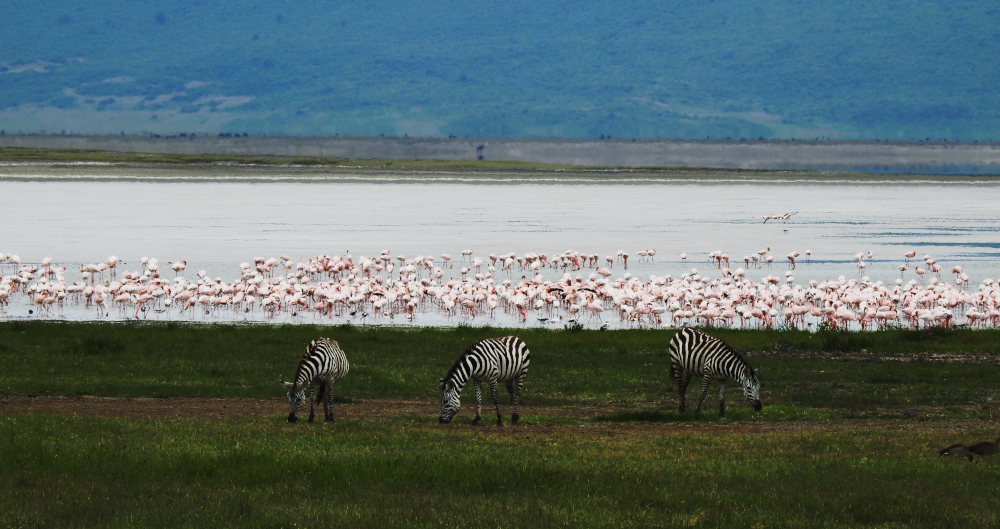
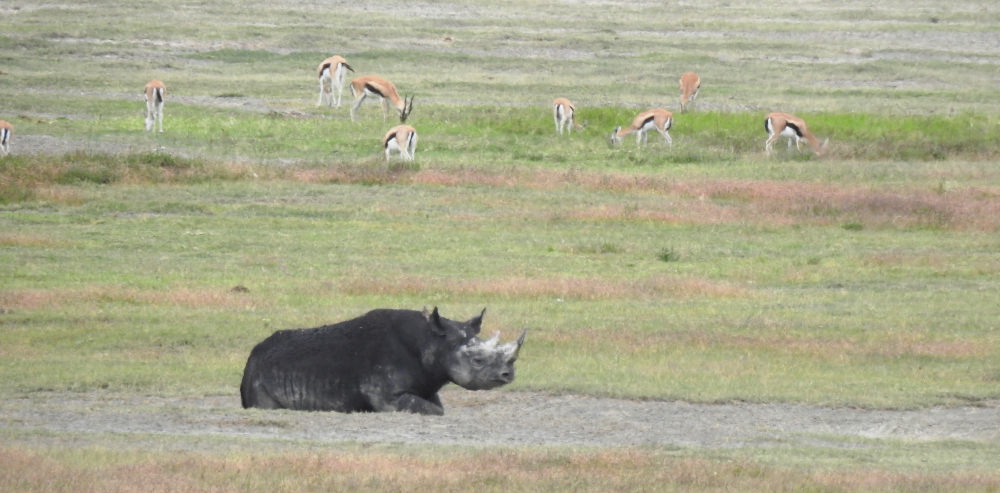
We also watched two female lions stalk a group of wildebeests for about ten minutes and then saw them spring into action to chase them down. The lions did not catch them but it was exciting to watch.
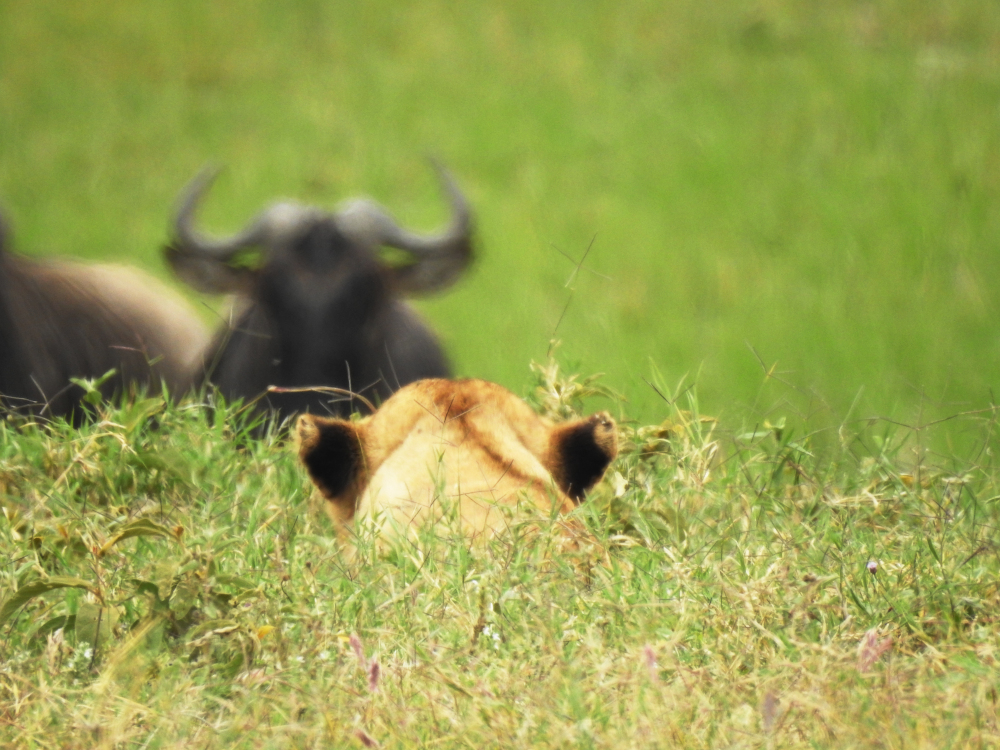
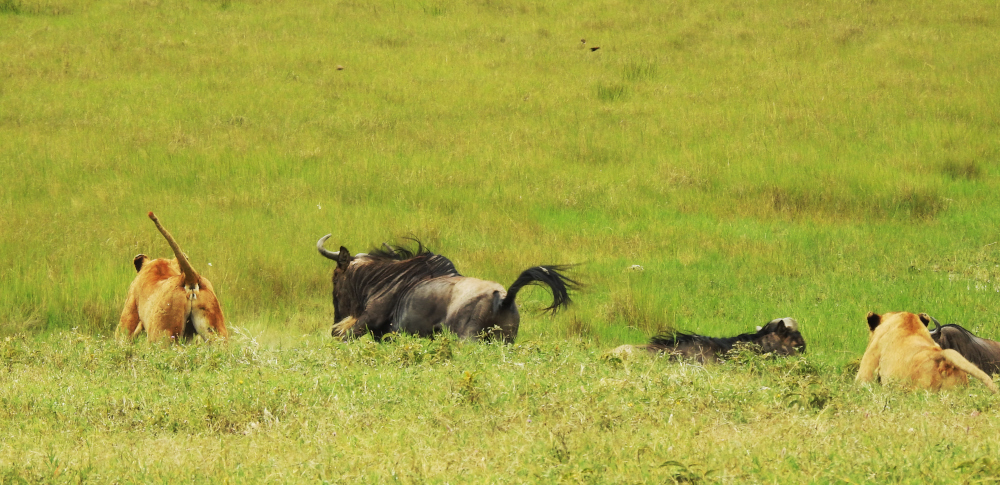
After our time in the crater we drove down a dusty and bumpy road for several hours in our jeep to reach the Serengeti National Park. Our jeep got a flat tire but luckily the jeep was equipped with two spares. The road was flat but bumpy and the jeep kicked up a big trail of dust behind us.
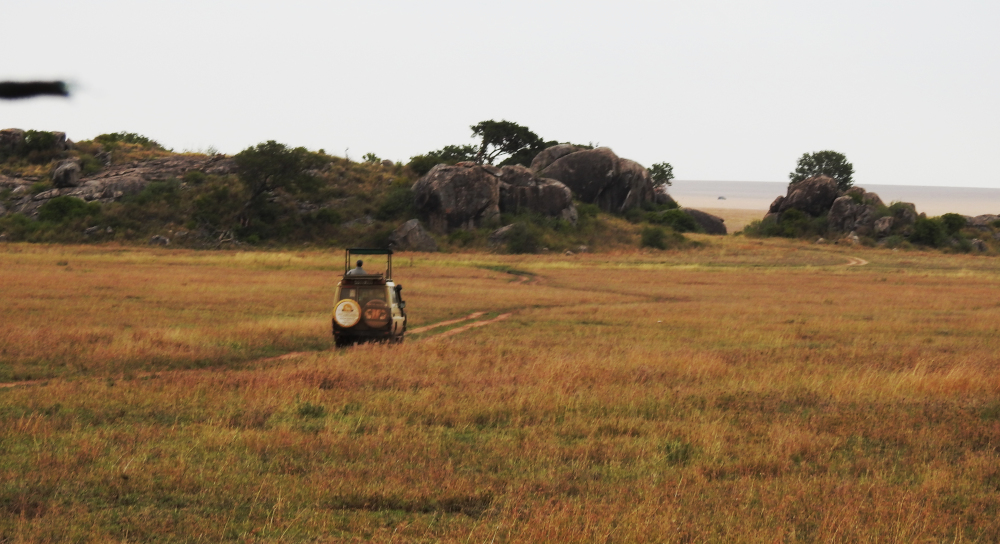
Along the way we saw giraffes, zebras, and gazelles. Once we entered the Serengeti we went straight into a game drive in the jeep. We spotted a male lion with an impressive mane accompanying by a female lion. We also saw hartebeests and a saddle-billed stork. We also caught a glimpse of a leopard with a cub on its back but it ducked behind a rock right as we drove up in the jeep and I didn’t even have a chance to get a photo.

That evening we camped inside the Serengeti with no fence at all around the campsite, meaning there was no barrier between where we camped and the animals living in the park. Our trip leader told us what to do if we ran into a lion, elephant, or buffalo at night, and this advice basically scared me to death to think that that might even be a possibility. When walking around the campsite in the dark I would shine the light outward to look for eyes reflected back but I did not see any thank goodness. The walk from our tent to the bathroom was rather long so I made sure to fully empty my bladder before bed as there was no way I was walking in the dark to the bathroom with a head torch in the middle of the night. There were a couple other groups in addition to ours at the campsite so I think the noise and light kept most of the animals away while we were there.
The next day we enjoyed a full morning game drive around the Serengeti followed by a big brunch with pancakes prepared by our cook Henry at the campsite. In the morning we spotted more lions and a cheetah off in the distance.
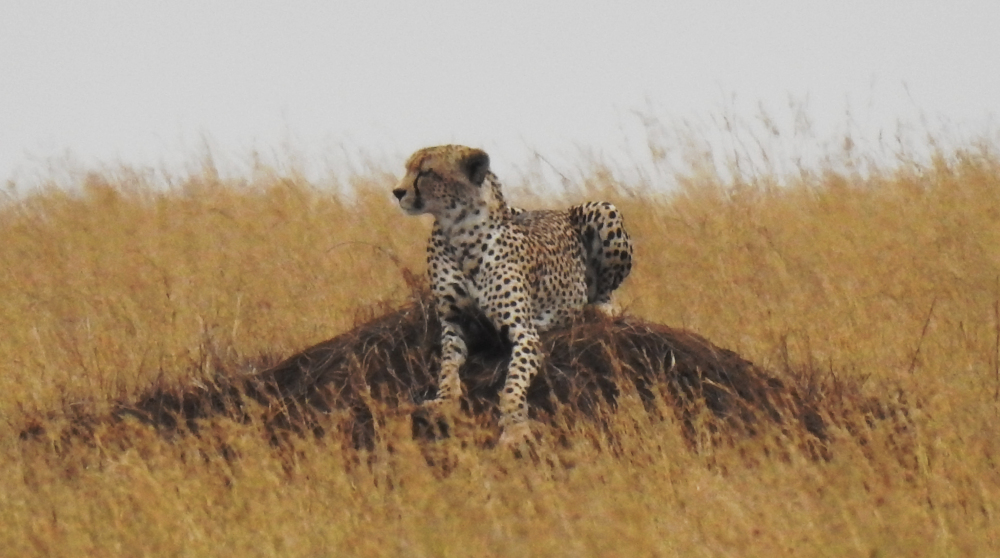
We also saw some cute vervet monkeys and thousands and thousands of wildebeests migrating away from the Serengeti as a group heading north to Maasai Mara as part of the Great Migration. We saw many zebras also and I just love photographing them, especially when they do their ‘zebra neck hug’ where they rest their heads on each others’ backs.
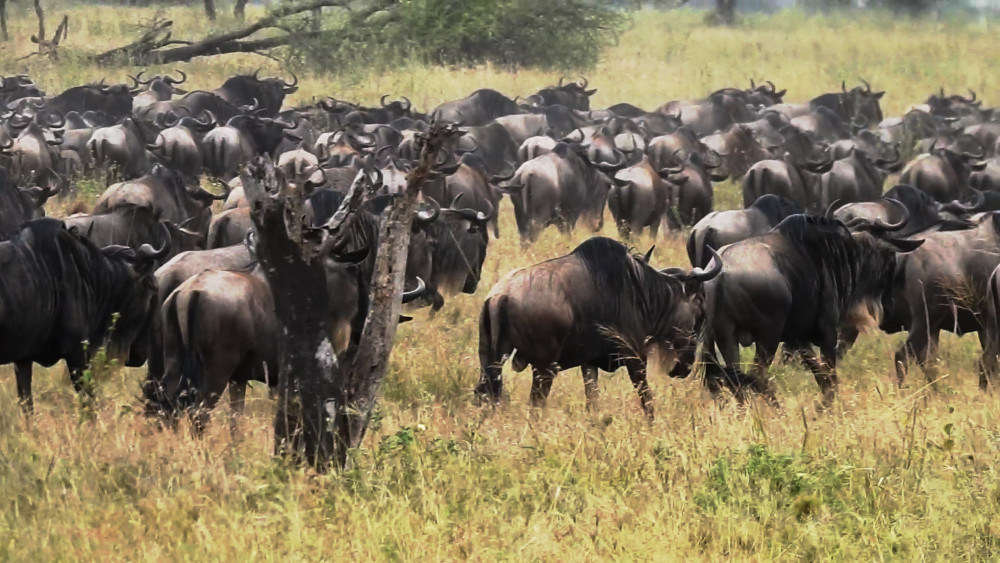
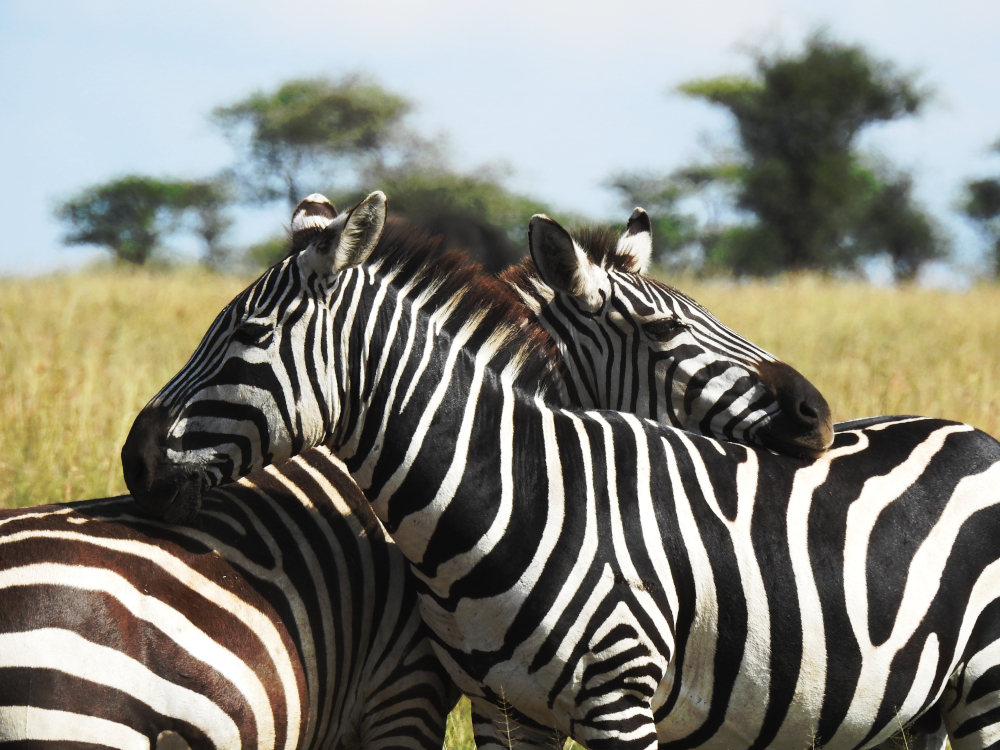
We saw a beautiful elephant family eating at the closest range we had been to any elephants yet and it was lovely to see them up close and make out the details of their faces. We also saw a group of sixteen giraffes that crossed the road just in front of our jeep.
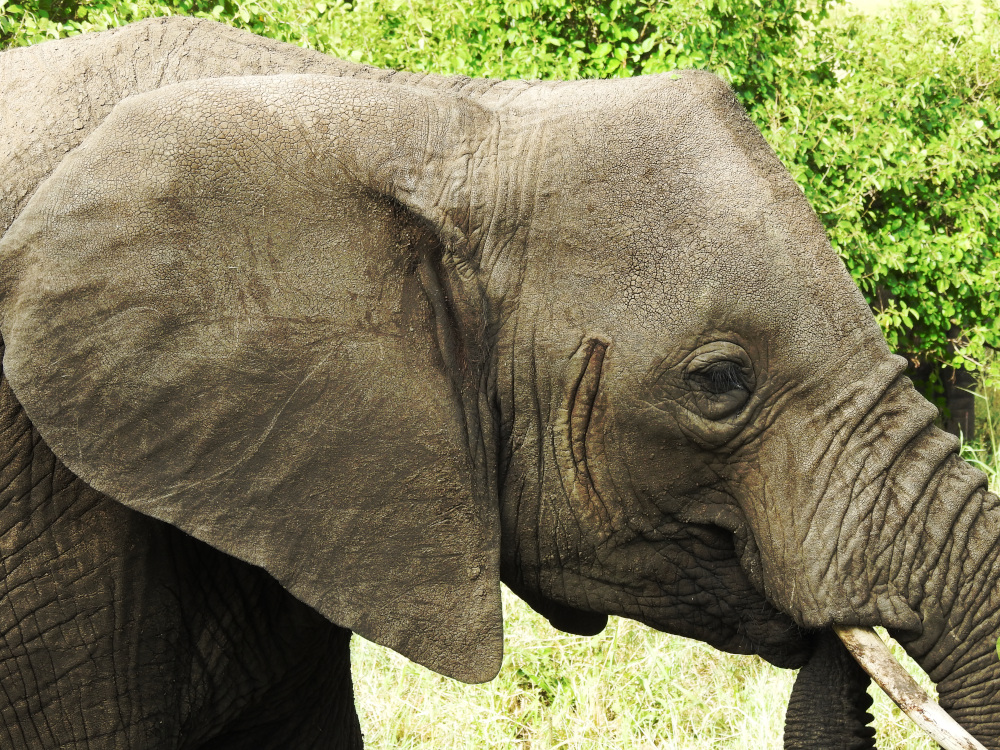
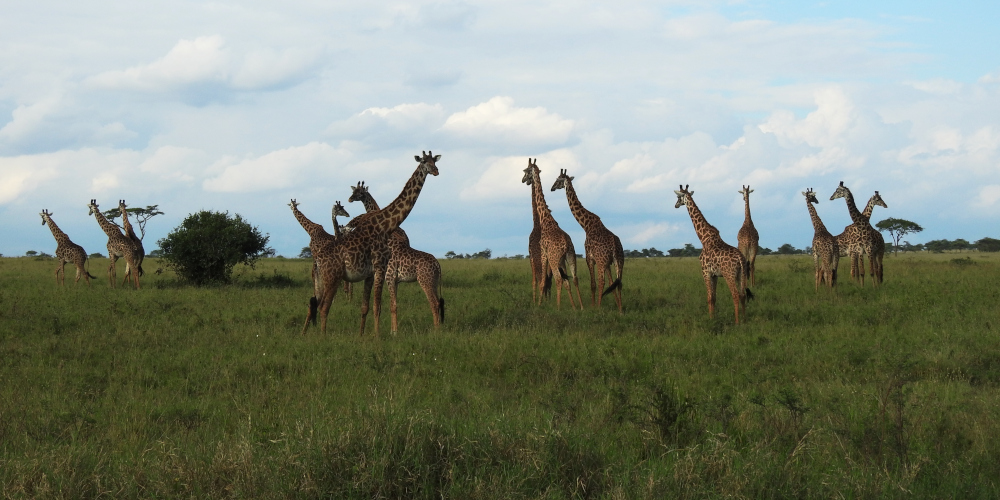
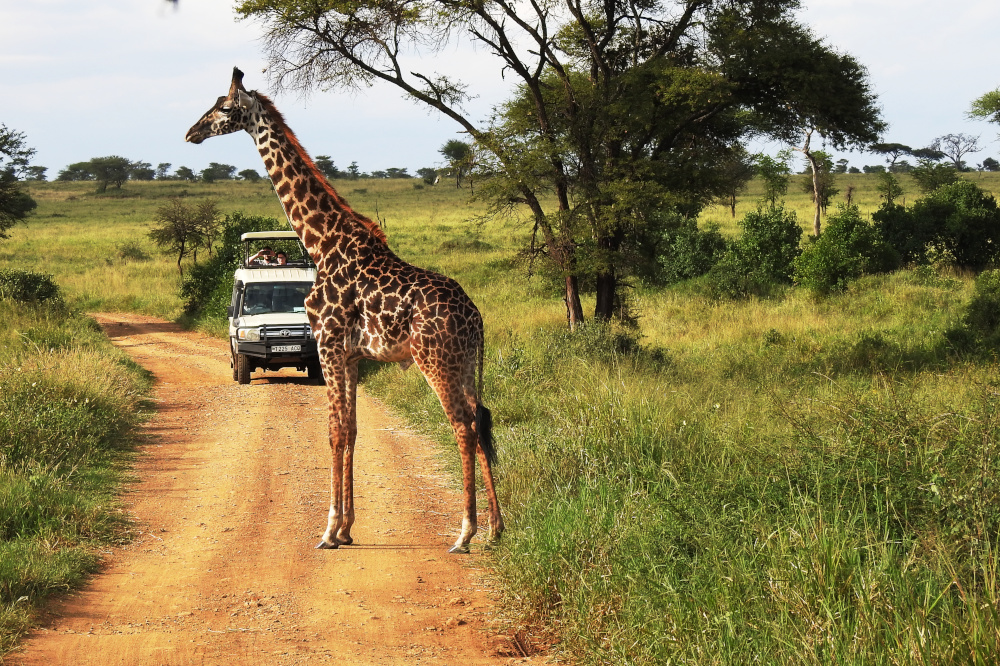
We later happened upon a group of lions feasting on a wildebeest together very close to the road. One of the lions walked very close to the jeep, which got our attention.

We also spotted a number of baboons, hyenas, a bat-eared fox, rock hyraxes, impalas, a crocodile, klipspringers, and hippos.
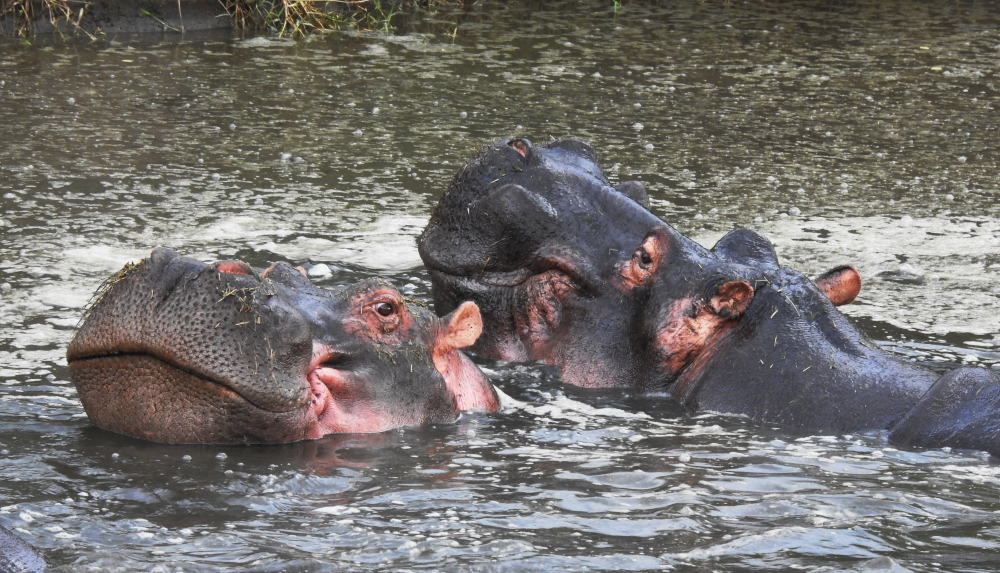

After one more night of camping in the Serengeti, we packed up in the morning and made the drive back to Mto Wa Mbu. Along the way our jeep had another flat tire and the removable roof blew off without us noticing, but luckily another jeep in our group behind us saw it and picked it up and returned it when we made a rest stop.
Once back in Mto Wa Mbu we toured one of the local villages with several young guides from the village to learn about their village life and culture. We learned about farming techniques for rice and bananas, popular crops in their village. We also sampled beer made from bananas, a popular local beverage, and met some local craftsmen and artists while viewing their artwork. After the village walk we were treated to an amazing dinner prepared by some of the local village women. The dinner included an eggplant dish, fried bananas and sweet potatoes, rice with zanzibar spices, sauteed spinach, ugali, cucumber salad, sauteed cabbage, a red chili sauce, and chapati. There was also an additional beef and potato dish we did not try.
Most if not all of the food was grown locally and it was incredibly delicious. Everything was so fresh and perfectly prepared. I was too full for dessert but they brought out a tray of fresh fruit for the final course that included red bananas, watermelon, and green oranges. I loved how everything was fresh whole food that was locally grown and almost everything was plant-based. I was so happy after this meal that I had to give the main cook a big hug and thank her for the amazing feast. After dinner we took a tuk tuk back to our campsite and retired for the evening.

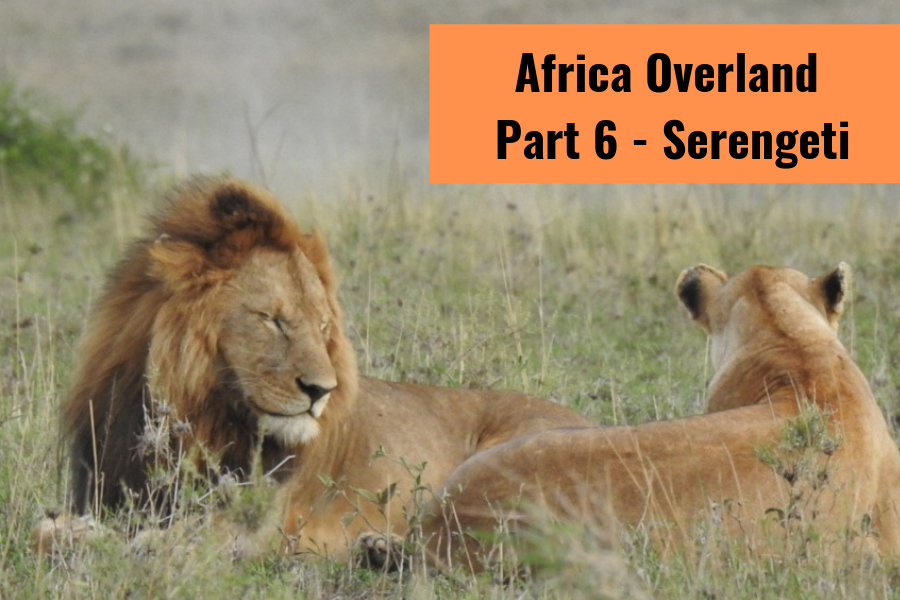

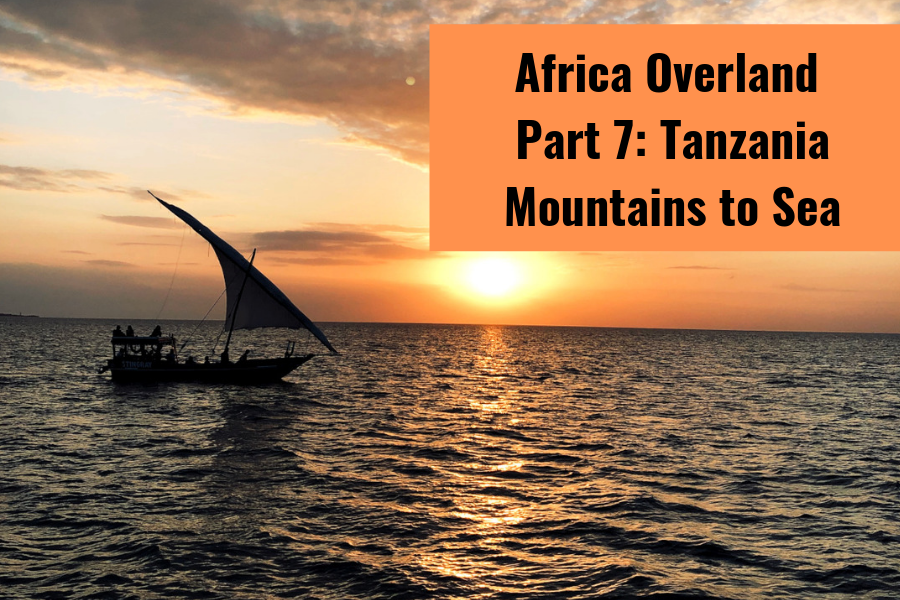

Great photos! Thanks for sharing these adventures. Safe travels, Bonnie
Thanks so much, Bonnie!
Wow! Such a great trip and sights to see. Thank you for posting and letting us follow your trip!! You all have a great time, stay safe, and keep posting!
David and crew.
Thanks so much David! Hope all you guys are doing great!
Awesome pictures!! Y’all really got lucky w/ the wildebeasts and all of the chases/kills you have been able to witness!!! Not sure if things are less active in December but we only saw one kill and didn’t get a chance to see any chases at all. And your food sounds WAY better than what we had…we were very underwhelmed with the cuisine in Kenya. So glad you are loving it!!
Thanks Kat! Between our cook that travels with us and the local meals we’ve had Intrepid has done an excellent job of helping us to have access to some great food! I have a list of local dishes I want to try to make when we get home. May need to have an African food theme dinner party when we get back!
These photos are incredible! You could get a job with National Geographic after this. Amazing!
Thanks Heather! It has been so fun to photograph the gorgeous wildlife!
Hi Kerry and Rob-
I am a friend of Marcia, and she very kindly shared your unbelievably wonderful adventure with me, as I have been to Africa several times – – – but not to the extent and excitement of yours!
What kind of camera do you use?
You take amazing photos!
I love reading your detailed blog and wish that I were along with you two!! Jamie McCulloch
Hi Jamie! Most Africa photos on this site were taken with our Nikon P900. We bought it for this trip and have been enjoying it. Thanks for reading our blog!
Another amazing adventure! Thanks for sharing it all with us!